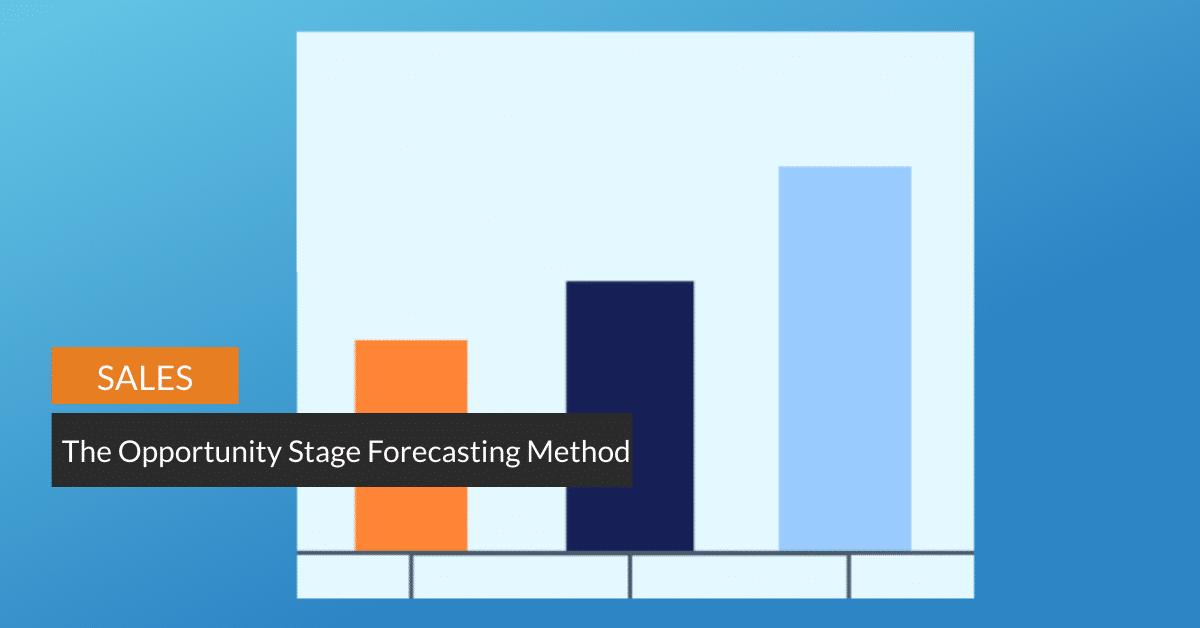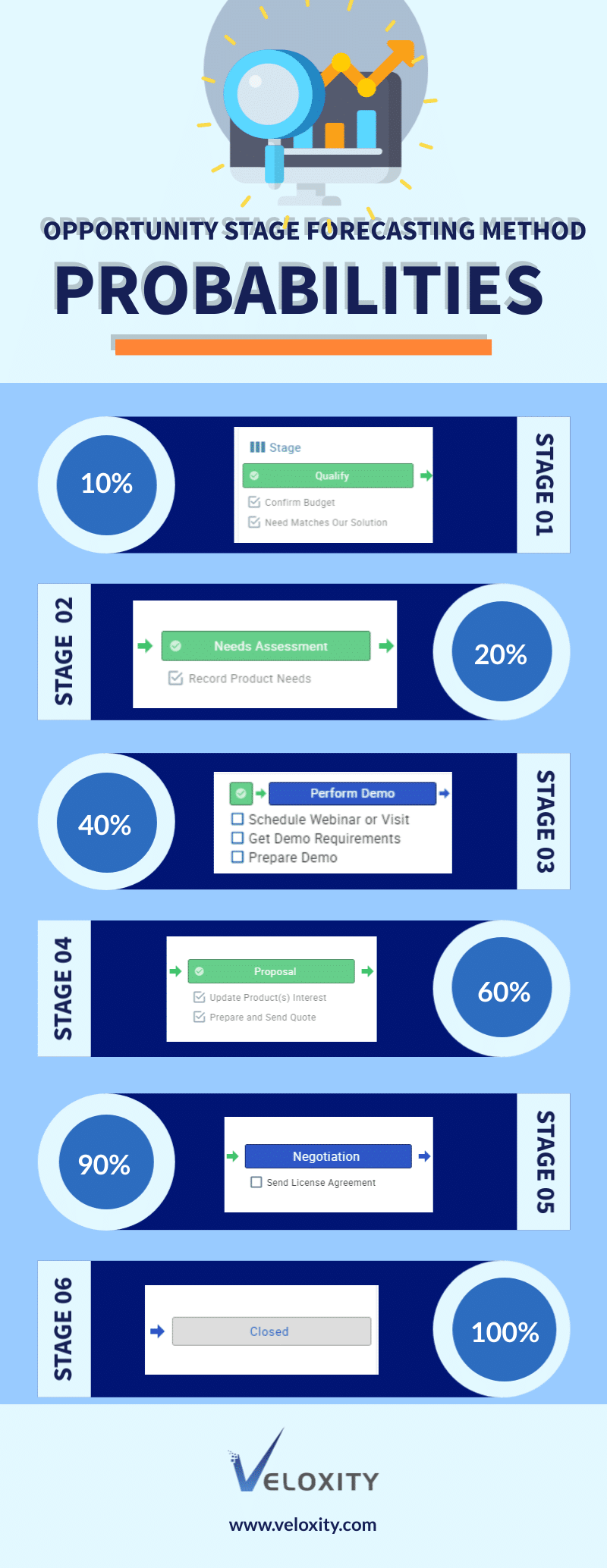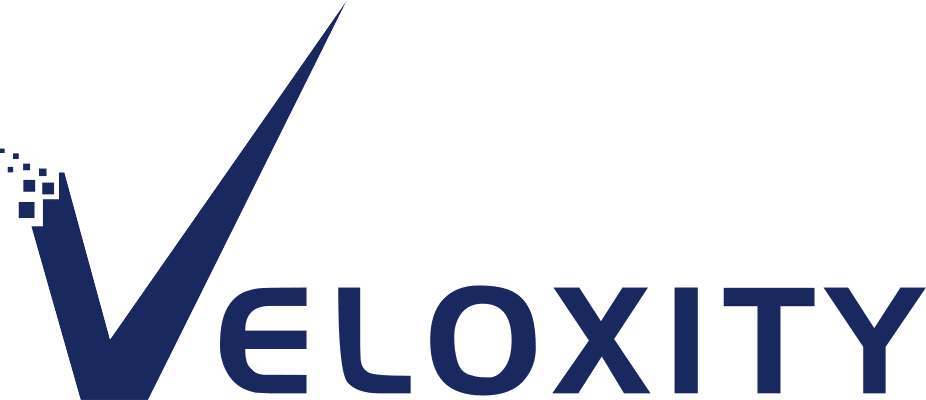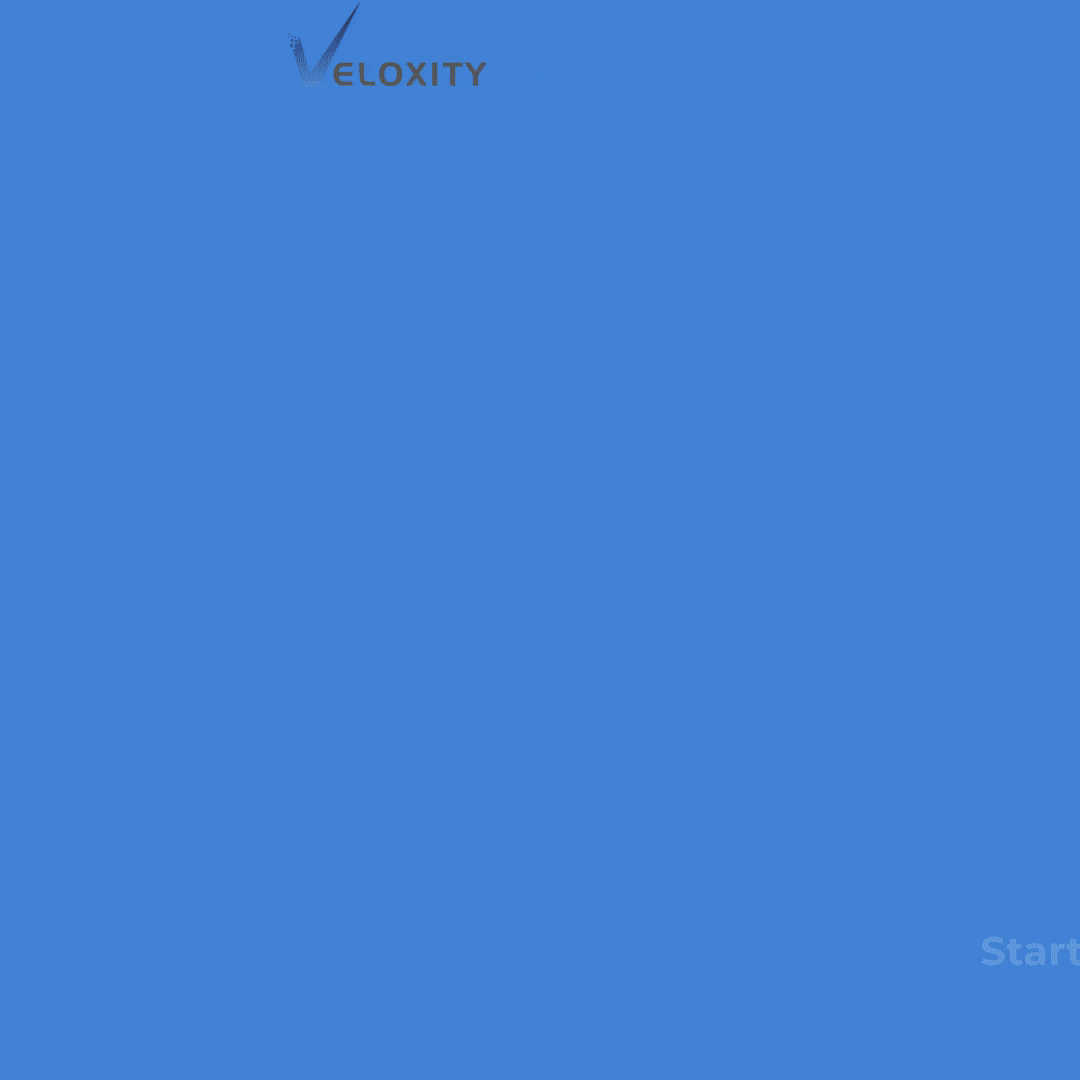Tips and Tricks for Accurate Revenue Predictions

- Forecasting in Sales
- What are Forecasting Methods?
- Managing Complexity in Forecasting
- Examples of Sales Forecasting Methods
- Opportunity Stage Forecasting Method
- Six Steps to Implement the Opportunity Stage Forecasting Method
- Step 1: Pick a reporting period
- Step 2: Define high-level sales stages for your sales process
- Step 3: Create Guided Sales Steps for each stage of the sales process
- Step 4: Set a probability to close for each sales stage in your pipeline
- Step 5: Calculate a win rate for each pipeline stage
- Step 6: Coach your sales reps on how to enter clean data
- Tips for Managing Complexity in Forecasting
- Be aware of your multiple possible futures
- Be mindful that small decisions can lead to unforeseen changes
- Use mistakes to your advantage
- Conclusion
Forecasting in Sales
The future is uncertain.
Yet, so many strategic decisions depend on a reliable prediction of the future.
How can you predict what is uncertain?
Sales forecasts use forecasting methods and sales data in a consistent way to chip away at the uncertainty.
Even though we don’t know the future with 100% accuracy, we can see certain trends and probabilities. For example, I live in the northeastern United States. The month is February. I know that tomorrow the weather will likely be in the mid-30s. I can also predict that tomorrow at 9 AM I will be in my office writing an article.
If you think about it, you can expect with some certainty many things about the future. There will be outliers, unusual events – birthday mornings where I get a late start. Unusual weather patterns that launch us into the 40s for a day or two. But even with those exceptions, the prediction remains useful. The trends and probabilities happen most of the time. A forecast doesn’t have to be perfect to be helpful.
Even in periods of dramatic, rapid transformation, there are vastly more elements that do not change than new things that emerge.
Paul Saffo, Futurist
When we take this knowledge and apply it in a structured way, we can create forecasts. A forecast will usually provide us with better data on which to base decisions than without one.
What are Forecasting Methods?
Forecasting methods are lenses. They help us to see. Imagine something like eyeglasses. Different methods, like different glasses, allow us to see the future in different ways. Too sunny? Sunglasses. Far-sighted? A pair of reading glasses. Reading glasses won’t help you see the road when the sun is rising along the highway directly in your line of sight. Sunglasses won’t help you when you’re squinting to read the words on the computer screen. You get the point. We use different methods, like lenses, to help us see in different ways.
When you select a forecasting method, you are choosing the lens through which you will view your sales data. You are choosing the glasses that will help you envision the future.
Being able to see the future is important in business. Leaders face complicated decisions daily. An accurate view can mean the difference between a company succeeding or failing. A lot is at stake.
Managing Complexity in Forecasting
Did you see Men in Black 3? I just watched it last night, so it’s on my mind. In Men in Black 3, Jay (Will Smith) goes back in time to create a different future – a future where Agent K (Tommy Lee Jones) does not die. What Jay learns is that there are multiple possible futures. Small, seemingly insignificant choices in the present impact events leading to vastly different outcomes. Creating a different future is easy – creating the future he imagines is hard. Jay does get better at creating the future he wants. His progress is made by making mistakes, learning from them, correcting them, and not repeating them.
Suppose we were to apply a theory of Men in Black 3 to sales forecasting. In that case, we could consider the following ways to make progress:
- Be aware of your multiple possible futures
- Be mindful that small decisions can lead to unforeseen changes
- Use mistakes to your advantage
These tips are not just helpful if you are racing against an alien invasion; rather, as we will explore in this article, futures scholars are making similar sales forecasting recommendations.
Considering complexity can offer insight. But at the end of the day, you need to jump in and get started. I’m going to give you resources to help manage the complexity. I’m also going to provide you with solid tools to create sales forecasts for your business.
By the end of this article, you should know how to successfully implement the Opportunity Stage Forecast Model. You’ll also learn some important tips and tricks to help manage the complexity of forecasting and get the most out of this method.
Examples of Sales Forecasting Methods
Sales forecasting allows companies to make informed business decisions based on information gathered through their sales pipeline.
These decisions have a companywide impact that influences the company’s financial, operational, and marketing decisions.
For example, if your forecast shows your team hitting capacity next quarter, you can start the hiring process now. Your new team members will have time to onboard and be ready when you need them. Maybe the forecast projects a higher demand than the inventory you have on hand. Make adjustments now so you don’t run out of stock. Or, perhaps your forecast shows a drop in sales in a particular market. Investing in a new marketing campaign today allows your team time to find and warm new leads in that market.
Magic formulas or software packages can’t give you 100% accurate sales forecasts. Luckily, sales forecasts don’t have to be perfect to be valuable. Consistency, clean data, and a reliable forecasting method can go a long way.
Companies use many different methods to forecast sales. These are a few of the most common methods:
- Opportunity Stage Sales Forecasting. This forecasting method predicts the probability of an opportunity closing based on where the opportunity currently is in your sales pipeline.
- Intuitive Sales Forecasting. This forecasting method taps sales reps’ knowledge asking them to estimate the likelihood of individual opportunities closing.
- Historical Sales Forecasting. This forecasting method looks at a matching forecast period (perhaps comparing the last quarter to this quarter or the 4th quarter in 2020 to the 4th quarter in 2021) and assumes sales results will be equal to or greater than that forecast.
- Length of Sales Cycle Forecasting. This forecasting method uses the age of individual opportunities to predict when they will close.
- Pipeline Sales Forecasting. This forecasting method reviews each opportunity in the pipeline and calculates the probability of closing based on unique company variables such as the opportunity value and the sales rep’s win rate.
Of these methods, the Opportunity Stage Forecasting Method is arguably the most popular. Perhaps that’s because Opportunity Stage Forecasting is statistically based, objective, reliable, and relatively easy and cost-effective to implement.
Opportunity Stage Forecasting Method
The Opportunity Stage Forecasting Method predicts the probability of an opportunity closing based on where the opportunity currently is in your sales process.
Common sense tells us that the further along in the sales cycle a prospect is, the greater the probability of the deal closing. For example, a lead that has just come in has a lower probability of closing than a prospect you’ve just sent a sales quote after a demo. While it is true that sometimes the higher probability opportunity won’t close – and that lead with the lower probability will – the forecast continues to update as prospects progress through the sales stages. The forecast isn’t 100% accurate. Your sales won’t be exactly equal to your projections. But forecasts can give you a good number to use to make decisions. Forecasts don’t have to be perfect to be helpful.

Six Steps to Implement the Opportunity Stage Forecasting Method
If you are interested in implementing the Opportunity Stage Forecasting Method for your business, the following six steps will guide you through this process:
Step One: Pick a reporting period
Step Two: Define high-level sales stages for your sales process
Step Three: Create guided sales steps for each stage of the sales process
Step Four: Set a probability to close for each sales stage
Step Five: Calculate a win rate for each pipeline stage
Step Six: Coach your sales reps on how to enter clean data
Step 1: Pick a reporting period
First, you need to know your average sales cycle.
Pick a reporting period that works with your business: monthly, quarterly, yearly. This is the interval you will use to build sales forecasts.
The best time to start a new forecasting method is during the start of a new sales cycle.
Veloxity CRM Tools for picking a reporting period: Select your reporting period from a drop down menu. The system automatically configures dashboards, forecasts, and data to reflect your chosen sales cycle.
Step 2: Define high-level sales stages for your sales process
Establish a high-level structured and documented sales process for converting a lead to a customer.
Sales Stages describe the high-level steps within your sales process. Realistic opportunity stages are critical because they deliver pipeline visibility through reports and dashboards.
Sales stages represent specific milestones that each opportunity progresses through before moving on to the next step in the sales process. The specific names and milestones of these stages will differ, depending on your industry.
Here’s an example of commonly used sales stages:
- Qualify
- Needs Assessment
- Perform Demo
- Proposal
- Negotiation
- Closed (either won or lost)
Veloxity CRM Tools for defining high-level sales stages: Enter the names of your sales stages in order into sales stage setup. Veloxity uses this information to automatically populate your sales process view and calculate forecasts. Once configured, sales reps can easily drag and drop opportunities to move them from one sales stage to another.
Step 3: Create Guided Sales Steps for each stage of the sales process
Outline specific steps that must be completed at each stage to advance the opportunity to the next stage.
Design a very well-defined list of actions that need to happen before moving an opportunity on to the next stage. Sales reps need to advance opportunities using the same criteria.
You’ll lose accuracy without clear guardrails over this part of the process.
Here’s an example of guided sales steps for each stage of the sales process:
Qualify
- Confirm budget
- Need matches our solution
Needs Assessment
- Record product needs
Perform Demo
- Schedule webinar or visit
- Get demo requirements
- Prepare demo
Proposal
- Update product(s) and interest
- Prepare and send sales quote
Negotiation
- Send license agreement
Closed
Veloxity CRM Tools for creating guided sales steps: Next to each sales stage, enter any steps a sales rep needs to take before advancing the opportunity to the next stage. Veloxity uses this information to populate checklists for each sales stage. Once configured, sales reps can check off each step, guiding them through the sales process, before moving on to the next stage.
Step 4: Set a probability to close for each sales stage in your pipeline
In Opportunity Stage Forecasting, as an opportunity progresses through the sales pipeline the likelihood of the deal closing increases.
Set the probability to close for each sales stage in your sales process. This is an important part of forecasting calculations. Look at historical data and calculate sales stage probabilities based on previous opportunities’ sales stage performance.
Here’s an example of sales stage probabilities:
- Qualify (10%)
- Needs Assessment (20%)
- Perform Demo (40%)
- Proposal (60%)
- Negotiation (90%)
Veloxity CRM Tools for setting sales stage probabilities: Next to each sales stage, enter the sales stage probability. Veloxity automatically updates opportunities in your system and uses this information to calculate forecasts.
Step 5: Calculate a win rate for each pipeline stage
To calculate the win rate, multiply the amount or value associated with each opportunity with a close date in the reporting period by the probability of opportunities in that stage closing.
Expected Revenue = Deal Amount * Probability to Close
You then get a sales forecast for that period.
Here is a basic example to show you how this looks in practice:
February’s Forecast
| Opportunity Name | Stage | Probability | Amount | Forecasted Amount |
| Opp A | Qualify | 10% | $100 | $10 |
| Opp B | Demo | 40% | $200 | $80 |
| Opp C | Proposal | 60% | $300 | $180 |
| TOTAL | $270 |
Veloxity CRM Tools for calculating win rates and generating forecasts: Forecasts are automatically calculated based on your sales stage data. Use the Sales Divisions / Territory management feature for a complete view of your team’s organizational structure, including at-a-glance forecasts with individual and team progress to quota. The scroll bar enables you to view past, present, and future forecasts easily.
Step 6: Coach your sales reps on how to enter clean data
Create a system to coach your sales reps to accurately and consistently use and update sales stages.
A sales forecast is only as good as its data. Without clean and accurate data, the sales forecast isn’t helpful.
- Data needs to be recorded in real-time. One common error that companies often experience is that sales reps do not update their sales pipeline regularly. This can significantly impact revenue prediction for a company as well as future forecasts.
- Sales reps need coaching on how and when to record sales data accurately. Sales reps often don’t know which data is relevant to record. Companies need to help their sales teams understand why recording sales data is critical to the company.
Veloxity CRM Tools for coaching your sales reps on how to enter clean data: The Veloxity Hub enables sales reps to record data in real-time. Enter Opportunity Data, Edit Close Dates, Update Sales Stages, and Opportunity Amounts all from a single interface. The Hub not only makes it easy for reps to record clean data, but the process is also streamlined, showing reps what to prioritize.
Tips for Managing Complexity in Forecasting
As we discussed at the start of the article, sales forecasting allows companies to make informed business decisions based on information gathered through their sales pipeline. Clean data, a reliable forecasting method, and consistent use can lead to useful sales forecasts.
As you continue to develop your forecasting techniques, keep the following tips in mind:
- Be aware of your multiple possible futures
- Be mindful that small decisions can lead to unforeseen changes
- Use mistakes to your advantage
Be aware of your multiple possible futures
Look at your sales data through different lenses. Create charts and dashboards to track your most important metrics. Consider using a second forecasting method as a benchmark.
Intuitive Sales Forecasting
Opportunity Stage Forecasting ignores one rich source of information: you sales reps.
If you are just getting started, and don’t have a lot of clean data in your pipeline, or if you haven’t made a lot of sales, you may want to begin with Intuitive Sales Forecasting. Tap into your reps’ knowledge and ask them to update opportunities based on their win probability.
Because of the subjectivity of Intuitive Forecasting, we recommend, after you have more data in your system, to either move on to Opportunity Stage Forecasting or create a hybrid model where you use sales stage probabilities but also train sales reps to override these probabilities with their own numbers in clearly defined cases.
Veloxity CRM Tools for enabling Intuitive Sales Forecasting: To enable Intuitive Sales Forecasting, you can override opportunity stage probabilities by checking a box to enable reps to enter their own probability of the opportunity closing. The probabilities the reps enter will be calculated into projected opportunity revenue within a specific forecast period.
Historical Sales Forecasting
Another method to consider is using Historical Sales Forecasts as a benchmark in addition to Opportunity Stage Forecasting. Historical Sales Forecasting looks at matching sales periods and considers that results will be equal to or greater than those results.
Veloxity CRM Tools for enabling Historical Sales Forecasting: Easily set benchmarks with Historical Sales Forecasting in Veloxity CRM. The Sales Division management feature allows you to easily scroll to view past, present, and future forecast periods.
Be mindful that small decisions can lead to unforeseen changes
Be aware of decisions and changes that impact your forecast.
- Old opportunities sitting in your pipeline too long can lead to unreliable forecasts. Opportunity Stage Forecasts rely on accurate closed dates. Keep your data fresh and ensure opportunities are updated regularly.
- Throughout the year, you may change messaging, products, your sales process, and other variables. In that case, your opportunities may move through the sales stages at different rates than in the past. Be sure to reconsider your sales stage probabilities.
- Sales managers and sales professionals need to use and update sales stages in the same way. If reps are not using the same process, the calculations will be off.
Use mistakes to your advantage
Use mistakes to clarify your goals and processes.
Look for small errors and mistakes, even those that seem insignificant. Use them as catalysts to continue to design and test improvements to your system. This process of continuously looking for and correcting errors will enable you to fail forward.
Take inspiration from others and use mistakes to your advantage:
Imagine being fired from the company you created.
In 1985, this happened to Steve Jobs.
“Sometimes when you innovate, you make mistakes. It is best to admit them quickly, and get on with improving your other innovations.”
Steve Jobs
Being fired from Apple enabled Jobs to work on new projects. Jobs acquired the computer graphics division of Lucasfilm, Ltd. and renamed it Pixar Animation Studios. He also founded a new software company called NeXT which designed a new operating system. Apple Computer bought NeXT in 1996 after its own efforts to upgrade the Macintosh operating system failed.
Jobs eventually returned to Apple as the CEO.
Conclusion
Sales forecasting allows companies to make informed business decisions based on information gathered through their sales pipeline. These decisions have a companywide impact that influences the company’s financial, operational, and marketing decisions.
Using a Sales CRM streamlines and upgrades this process by automating processes to implement clean data collection, consistency, and effective sales forecasting methods.
Implement Sales Stage Forecasting today with a free 30-day trial of Veloxity CRM. Structure your sales cycle, sales stages, guided sales steps, probabilities, and calculations in Veloxity CRM. Experience the difference a modern sales CRM makes for your business.
Veloxity CRM is a leading provider of Customer Relationship Management (CRM) software enabling you to manage your sales organization, products, and customer data. Veloxity CRM offers best-in-class usability with its innovative Hub, Kanban views, and more such as graphical Sales Division Management, Automated Lead Routing, and Intelligent Forecasting, all reachable through Veloxity’s intuitive, responsive, web-based user interface. Veloxity is a platform that can be tailored to your particular business needs and is suitable for both B2C and B2B businesses. More information about Veloxity CRM is available at www.veloxity.com

